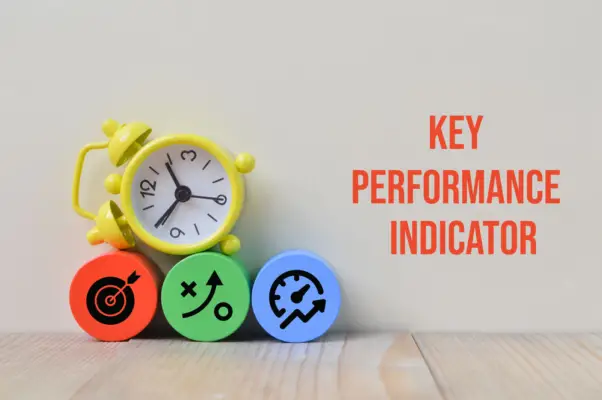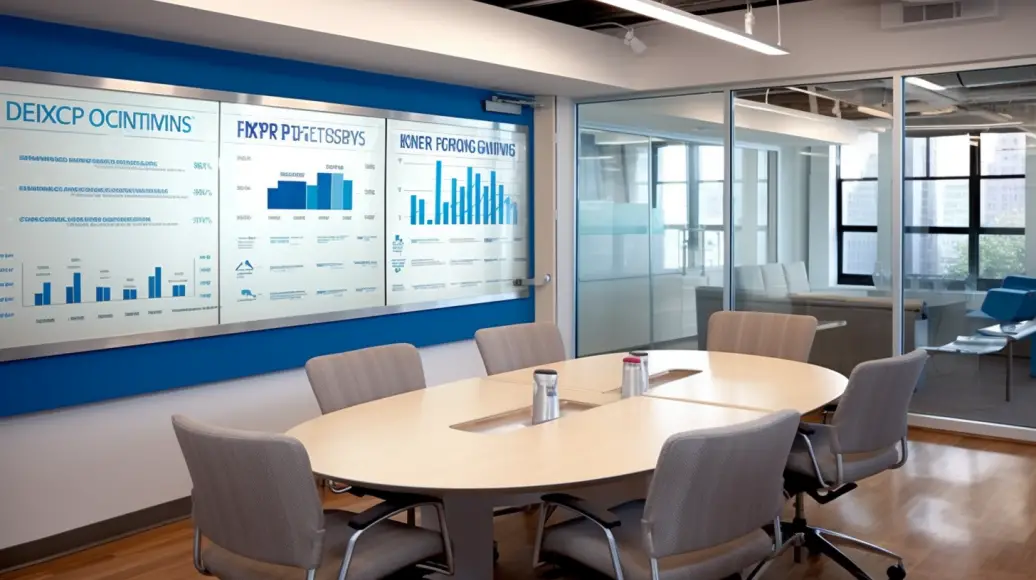Key Performance Indicators (KPIs) and Key Risk Indicators (KRIs) are essential for organizational success, yet they serve different purposes. KPIs measure our progress toward strategic objectives, helping us assess performance and align efforts with our goals.
They focus on outcomes like financial performance and productivity. In contrast, KRIs provide insights into potential risks that could impact achieving these objectives. By monitoring KRIs, we can identify and address threats proactively.
Together, KPIs and KRIs enhance our decision-making and support a balanced approach to performance management. Understanding these distinctions can lead to more effective strategy implementation and success.
Key Takeaways
- KPIs measure progress toward strategic objectives, while KRIs focus on potential risks impacting those objectives.
- KPIs evaluate performance and profitability, whereas KRIs assess risk levels that could hinder success.
- Effective KPIs align with organizational goals, whereas KRIs help identify and mitigate risks to those goals.
- Both indicators are essential for informed decision-making; KPIs guide performance, and KRIs inform risk management strategies.
- Utilizing a combination of KPIs and KRIs provides a comprehensive view of business health and strategic alignment.
Understanding Key Performance Indicators
When we talk about Key Performance Indicators, or KPIs, we’re referring to measurable values that help us track progress toward our objectives.
Understanding their importance in goal setting can transform how we approach our targets and evaluate success.
We’ll also explore the five essential elements that define a KPI and contribute to effective performance measurement.
What is a Key Performance Indicator (KPI)?
A Key Performance Indicator (KPI) is an essential metric that helps us measure how effectively our organization is achieving its key business objectives. We use key performance indicators to evaluate performance and track progress toward our strategic objectives.
By establishing relevant metrics, we can monitor progress and guarantee we’re aligned with our desired outcomes. These quantitative measurements often include financial performance measures, which allow us to assess our organization’s profitability and efficiency.
Utilizing KPIs enables us to focus on the most critical areas, guaranteeing we allocate resources effectively and make informed decisions. Ultimately, KPIs serve as a guiding framework that helps us navigate toward our goals and measure our success along the way.
The Importance of KPIs in Goal Setting
Understanding the importance of KPIs in goal setting allows us to align our strategic objectives with measurable outcomes, guaranteeing that we stay focused and driven towards success.
By establishing relevant KPIs, we can effectively measure success against our business goals. These key performance indicators provide a clear overview of our organization’s progress and help us make informed decisions throughout the strategic planning process.
Furthermore, KPIs play an essential role in evaluating employee performance, financial metrics, and customer satisfaction. By consistently tracking these performance indicators, we can identify areas for improvement and adjust our strategies accordingly.
Ultimately, utilizing KPIs guarantees our organization remains on track to achieve its objectives while fostering a culture of accountability and continuous growth.
The Five Elements of a KPI
Key performance indicators (KPIs) consist of five essential elements that guide our measurement of success and alignment with strategic goals.
First, we need a clear measure, like ‘number of new customers this year,’ to track important metrics and sales revenue too.
Next, we establish a target, such as ‘1000 new customers by the end of the year,’ to provide a numeric goal.
The data source is vital, as it guarantees we gather accurate information for our KPIs.
We also define the frequency of measurement, determining how often we’ll analyze our data.
Finally, alignment with goals guarantees that our KPIs reflect our overall performance and business health, reinforcing our strategic direction.
Together, these elements help us understand our progress and drive improvement.
Types of KPIs
When we explore the types of KPIs, it’s crucial to understand the difference between leading and lagging indicators.
Leading indicators help us predict future performance, while lagging indicators reflect past outcomes.
Leading vs Lagging Indicators
In evaluating performance, we often rely on both leading and lagging indicators to gain a complete view of our business’s health and future potential.
Leading indicators, such as customer satisfaction scores and employee turnover rates, help us anticipate future performance and align with our organization’s strategic goals. These key performance indicators (KPIs) allow us to make proactive adjustments.

Conversely, lagging indicators reflect past developments, such as financial performance and completed projects. By combining leading and lagging KPIs, we create a thorough picture for continuous improvement.
Utilizing effective reporting tools to track KPIs guarantees we stay informed and can adjust strategies accordingly, ultimately driving our organization toward success.
How to Choose the Right Type of KPI
Choosing the right type of KPI is essential for effectively tracking our business’s progress and aligning with our strategic objectives.
We should select key performance indicators that directly relate to our strategic goals. A balanced approach using both the leading indicator and lagging indicators helps us gain a thorough view of business performance. For instance, leading indicators can forecast customer retention, while lagging indicators measure outcomes after actions have been taken.
Utilizing KPI dashboards and KPI reports enables us to visualize data and make informed decisions. We must also consider quantitative KPIs for measurable results.
Creating Effective KPIs
As we create effective KPIs, we need to guarantee they align with our organizational goals.
Understanding the characteristics of a good KPI can help us design metrics that truly drive performance.
Additionally, we should be aware of common mistakes to avoid, which can hinder our progress and misdirect our efforts.
How to Develop KPIs that Align with Your Goals
To develop effective KPIs that truly align with our goals, we first need to identify our business objectives and the outcomes we want to achieve.
This process involves selecting key performance indicators that are measurable, achievable, relevant, and time-bound, often referred to as SMART criteria.
We should consider various aspects and types of KPIs, including financial KPIs and strategic KPIs, to guarantee a thorough approach.
For instance, leading KPIs like customer lifetime value can help us predict future performance and key result, while metrics such as employee satisfaction and conversion rate provide insights into operational efficiency.
Characteristics of a Good KPI
A good KPI embodies clarity, relevance, and measurability, ensuring it effectively drives our business performance. The characteristics of a good KPI include being quantifiable and outcome-based, which allows us to track progress towards our objectives.
These key performance indicators must be aligned with our business goals, providing a clear target that everyone can aim for. In addition, they should be easy to understand, enabling clear communication across our team.
By utilizing measurable metrics, we gain insight into our operations and can make informed decisions. Ultimately, effective KPIs contribute to our long-term success, guiding us as we navigate challenges and opportunities in the business landscape.
Let’s commit to developing KPIs that meet these essential criteria.
Common Mistakes to Avoid When Setting KPIs
Often, we make critical mistakes when setting KPIs that can hinder our progress and effectiveness. To create effective key performance indicators, we need to avoid these common pitfalls:
- Setting too many KPIs, which dilutes our focus on the most important ones.
- Creating KPIs that aren’t measurable or achievable, making it difficult to track progress.
- Failing to align KPIs with our business goals and objectives, leading to confusion.
Key Result Indicators (KRIs)
Now, let’s explore Key Result Indicators, or KRIs, and understand their significance in measuring success.
We’ll clarify what constitutes a Key Result and how KRIs differ from Key Performance Indicators (KPIs).
What are Key Results?
Key Results serve as crucial benchmarks that help us measure our progress toward achieving strategic objectives effectively.
These key results are specific, measurable objectives that guide our efforts and guarantee we’re aligned with our goals. By focusing on these measurable outcomes, we can make informed decisions that enhance our performance and optimize profit margins.
- Key results clarify what success looks like.
- They provide specific metrics to track progress.
- They help us evaluate the effectiveness of our leading KPIs.
Understanding the KPI meaning and how it relates to our key results is critical. This relationship allows us to enhance customer lifetime value and drive better outcomes in our strategic objectives.
How KRIs Differ from KPIs
Understanding the distinction between Key Risk Indicators (KRIs) and Key Performance Indicators (KPIs) is essential for effectively steering our strategic objectives.
KRIs focus on specific objectives, providing us with a clear picture of potential risks that could impede progress. In contrast, KPIs are broader metrics used to assess overall performance, like revenue growth and market share.
We utilize KRIs for progress measurement toward specific goals, while KPIs serve as a lagging indicator and indicators reflecting past performance. Different metrics, such as leading indicators, help us forecast future success.
Setting and Achieving Goals with KPIs
When we set and achieve goals using KPIs, we create a clear roadmap for success.
By generating KPI reports and utilizing dashboards, we can effectively track our progress and adjust our strategies as needed.
Understanding the advantages of KPIs in goal setting helps us stay focused and aligned with our objectives.
How to Create a KPI Report to Track Progress
To effectively track our progress and achieve our goals, we need to start by identifying the specific KPIs that matter most to us. By focusing on key performance indicators, we can measure various aspects of our business, such as:
- Website traffic
- New customers
- Sales revenue
Next, we should determine the frequency of measurement for each KPI to guarantee we’re consistently evaluating our performance.
A well-structured KPI report will help us track progress over time, allowing us to assess how effectively we generate revenue and manage our human resources.
Regularly reviewing this report keeps us informed and enables us to make timely adjustments to our strategies, ensuring we stay on course to meet our objectives.
Using KPI Dashboards to Monitor Performance
Building on our KPI report, employing KPI dashboards allows us to visualize our performance metrics in real time, making it easier to track progress and pinpoint areas that need improvement.
By selecting the right key performance indicators, we can directly relate our efforts to strategic planning and decision-making.
These KPI dashboards not only help us identify areas for improvement but also highlight key areas that can drive growth and increase revenue.
As we monitor our performance, we guarantee that our goals align with our overall strategy.
Regularly reviewing these dashboards empowers us to adjust our tactics effectively, assuring we stay on track to achieve our objectives while maximizing the impact of our key performance indicators.
Advantages of Using KPIs in Goal Setting
Utilizing KPIs in goal setting empowers us to track our progress effectively and maintain focus on our strategic objectives. By clearly defining our key results, we can measure success in areas like net profit margin and qualified leads. This structured approach, often seen in OKR examples, enables us to visualize our performance through KPIs, key performance indicators that provide actionable insights.
- We can identify trends and make informed decisions.
- KPIs help align our team around common goals.
- A clear OKR framework simplifies tracking our achievements.
When we comprehend what KPIs measure, it makes sense to leverage them for improving our net profit and overall organizational success. This clarity drives us toward achieving our goals systematically.
Implementing KPIs in Your Organization
When we implement KPIs in our organization, we should focus on best practices that guarantee effectiveness and alignment with our goals.
By setting specific, measurable targets and regularly reviewing progress, we can adapt our strategies as needed.
It’s essential to involve all team members, fostering a culture of accountability and continuous improvement.
Best Practices for Implementing KPIs
To effectively implement KPIs in our organization, we must confirm they align with our business goals and are crafted using the SMART criteria. This means our KPIs should be Specific, Measurable, Achievable, Relevant, and Time-bound.
To guarantee we capture a thorough view of performance, we should also use a mix of leading and lagging indicators.
Here are some best practices to take into account:
- Involve stakeholders in the KPI development process to gain diverse insights.
- Regularly review and adjust KPIs to adapt to changing business conditions.
- Communicate the importance of KPIs throughout the organization to foster a culture of accountability.
Measuring Success with KPIs
When we measure success with Key Performance Indicators (KPIs), we gain valuable insights into our progress.
By regularly evaluating these metrics, we can make informed adjustments to our strategies, ensuring we stay aligned with our goals.
This ongoing process not only helps us track performance but also empowers us to respond effectively to changes in our environment.
How to Use Key Performance Indicators KPIs to Evaluate Progress
Using Key Performance Indicators (KPIs) allows us to effectively track our progress toward achieving specific goals and identify areas where we can improve.
By regularly evaluating our KPIs, we can guarantee that we stay aligned with our objectives. This evaluation process not only highlights our successes but also points out the gaps that need attention.
Here are a few ways we can utilize KPIs effectively:
- Set Clear Targets: Define measurable goals for each KPI.
- Monitor Regularly: Review KPIs at consistent intervals to gauge progress.
- Engage the Team: Involve everyone in understanding and achieving the KPIs.
Adjusting Your Strategy Based on KPI Feedback
Regularly reviewing our KPIs not only helps us track progress but also provides valuable insights that guide us in adjusting our strategies for better outcomes.
By identifying areas for improvement, we can focus our efforts on what truly matters. When we notice a KPI falling short, it signals the need for a strategic shift.
This proactive approach allows us to adapt quickly, making sure we’re always aligned with our goals. Continuous monitoring of our KPIs guarantees we stay informed about our performance.
Conclusion
To sum up, understanding the role of KPIs in achieving our goals is essential for any organization.
These indicators not only help us measure our performance but also guide our strategic decisions.
The Role of KPIs in Achieving Your Goals
KPIs play an essential role in steering our organization toward success by providing measurable insights that keep us aligned with our goals. By tracking our progress, we can make informed decisions that propel us forward. These indicators not only reflect our current performance but also highlight areas needing improvement.
They help us maintain focus on our strategic objectives.
KPIs facilitate better human resource. allocation and prioritization.
Regular assessments of KPIs foster accountability within our teams.
Ultimately, KPIs are invaluable tools that guide us in achieving our targets. By consistently monitoring these metrics, we can adapt our strategies, ensuring we stay on the right path toward achieving our organizational goals.
To sum up, understanding the difference between key performance indicators (KPIs) and key risk indicators (KRIs) is crucial for organizational success.
By effectively creating and implementing KPIs, we can measure progress and achieve our goals.
Simultaneously, monitoring KRIs helps us identify potential risks, allowing for proactive management.
Together, these tools enable us to navigate challenges and seize opportunities, ultimately driving our organization toward sustained growth and success.
Embracing both KPIs and KRIs is essential for informed decision-making.
Key Performance Indicators (KPIs) and Key Risk Indicators (KRIs) are both important tools in business management, but they serve different purposes and provide insights into different aspects of business performance.
Key Performance Indicators (KPIs) are metrics used to measure the performance and effectiveness of an organization, team, or individual in achieving key business objectives.
KPIs are typically tied to an organization’s strategy and track progress toward strategic goals. They may be financial (like revenue growth rate or gross profit margin) or non-financial (customer satisfaction or employee turnover rate).
Key Risk Indicators (KRIs), on the other hand, are metrics used to measure the potential risks that may impact an organization’s ability to achieve its objectives. KRIs provide early warning signs of increasing risk exposure in various areas of the organization.
They are typically used in risk management to identify potential issues and problems before they occur, allowing organizations to take corrective action in advance.
In a nutshell:
- KPIs help an organization measure progress toward its goals.
- KRIs help an organization identify potential barriers to achieving its goals.
Both KPIs and KRIs are essential for effective business management. KPIs help guide decision-making and resource allocation by highlighting what’s working well and where improvements can be made.
KRIs help organizations identify and manage potential risks derailing their progress toward achieving their objectives. Together, they provide a comprehensive view of an organization’s performance and the challenges it may face in the future.
On the other hand, KRIs are early warning signals that alert us to potential risks that could impact our organization. By monitoring KRIs, we can proactively mitigate risks before they become major issues.
This article will explore the differences between KPIs and KRIs, how they can be used together, and why they are crucial tools for effective risk management and decision-making.

Purpose and Function
Understanding the purpose and function of key performance indicators (KPIs) and key risk indicators (KRIs) is crucial for effective risk management and decision-making.
KPIs measure business performance by providing quantifiable values that track progress toward particular targets. They help organizations understand how well they are doing in relation to their strategic plans.
On the other hand, KRIs measure potential risks and are used to determine how much risk an organization is exposed to or how risky a particular venture or activity is.
KPIs and KRIs are complementary tools for managing risks and measuring business performance. While KPIs help organizations measure success, KRIs help quantify risks. Effective KPIs and KRIs can help organizations make better decisions and manage risks more effectively.
KPIs and KRIs can be used together in an organization to evaluate both performance and potential risks.
KRIs provide early warning systems that allow organizations to monitor, manage, and mitigate key risks. They help organizations monitor the likelihood of not delivering good outcomes in the future.
KRIs are used in conjunction with a risk management framework to monitor various types of risks. Understanding the difference between KPIs and KRIs is important for effective risk management and decision-making. KPIs and KRIs are crucial for organizations to track in order to make informed decisions.
KPIs vs KRIs
You may be surprised to learn that there’s a crucial difference between measuring success and monitoring potential risks in your organization. While key performance indicators (KPIs) are used to measure how well your organization is performing in relation to its strategic goals, key risk indicators (KRIs) measure the level of risk your organization is exposed to or how risky a particular venture or activity is.
KPIs help you to understand how well your organization is doing and whether it’s meeting its essential business objectives. In contrast, KRIs provide early warning signals of potential risks and allow you to monitor, manage, and mitigate key risks.
It’s important to note that KPIs and KRIs are complementary tools for managing risks and measuring business performance. While KPIs help you measure business performance, KRIs help quantify risks.
Effective KPIs and KRIs enable you to identify, quantify, and monitor your organization’s biggest risks.
| Key Performance Indicators (KPIs)Key Risk Indicators (KRIs) | ||
|---|---|---|
| Definition | Metrics used to assess how effectively a company is achieving its core business objectives. | Metrics that provide an early signal of increasing risk exposure in various areas of the enterprise. |
| Focus | Focused on performance, efficiency, and success rates. | Focused on potential threats, vulnerabilities, and risk exposures. |
| Example | Sales growth, net profit margin, customer satisfaction, employee turnover rate. | Financial stress indicators, operational loss events, compliance violations. |
| Purpose | To measure the effectiveness of business strategies and identify areas for improvement. | To anticipate and mitigate risks before they escalate into significant issues. |
| Periodicity | Often reviewed on a regular basis, such as monthly, quarterly, or annually. | Reviewed regularly, but also triggered by events or changes in the business or external environment. |
| Nature | Typically forward-looking, focusing on achieving future goals. | Often backward-looking to understand what has happened, but also used to forecast potential future risks. |
| Response to Changes | Changes in KPIs may trigger adjustments to strategies or tactics to improve performance. | Changes in KRIs may trigger risk mitigation activities, such as contingency planning or process adjustments. |
| Stakeholders | Generally used by all levels of the organization to measure performance. | Often used by risk management, leadership, and sometimes regulatory bodies. |
Complementary Tools
Using KPIs and KRIs as complementary tools can provide a more comprehensive understanding of business performance and potential risks. While KPIs help us measure how well we achieve our strategic goals, KRIs provide early warning signals of potential risks that could affect our success.
To effectively use KPIs and KRIs as complementary tools, it’s important to understand how they work together. KPIs help us measure success, while KRIs help us identify potential risks that could impact that success.
This helps us make informed decisions that balance performance with risk management. Using KPIs and KRIs together also helps us prioritize our efforts.
Identifying key performance and risk indicators, we can focus on the areas most important to achieving our strategic goals while also managing potential risks. This helps us use our resources best and ensures we take a holistic approach to managing our business performance and risk.
KPIs help us understand how well we’re achieving our strategic goals, while KRIs provide early warning signals of potential risks that could affect our success.
Monitoring KPIs and KRIs helps us make informed decisions that balance performance with risk management. Identifying key performance and risk indicators helps us prioritize our efforts and best use our resources.
Industry Examples
Explore how various industries utilize KPIs and KRIs to monitor progress toward goals and mitigate potential risks.
In the healthcare industry, KPIs might include patient satisfaction rates, readmission rates, and average length of stay. On the other hand, Kris might include infection rates, medication errors, and patient falls.
In finance, KPIs might include return on investment, profit margins, and customer satisfaction ratings. On the other hand, Kris might include credit, liquidity, and market risks.
In the retail industry, KPIs might include sales per square foot, customer retention rates, and inventory turnover. On the other hand, Kris might include employee theft, supply chain disruptions, and cyber attacks.

Importance and Monitoring
Don’t overlook the importance of monitoring KPIs and KRIs in your organization, as they provide valuable insights into performance and potential risks.
KPIs and KRIs need to be monitored regularly, such as quarterly or semi-annually, to ensure that the organization is on track to achieve its strategic goals and identify potential risks that could derail those goals.
To effectively monitor KPIs and KRIs, it is important to establish a clear and concise framework for measuring and reporting on both performance and risk. This framework should include a set of specific and measurable goals, metrics, and targets for each KPI and KRI.
As well as a process for collecting, analyzing, and reporting on data. The framework should also include a system for identifying and addressing any issues that arise, such as changes in market conditions or emerging risks.
The following table provides an example of how KPIs and KRIs can be monitored in a healthcare organization. The table includes three KPIs, three KRIs, and their respective metrics, targets, and monitoring frequency.
| KPI/KRI | Metric | Target | Monitoring Frequency |
|---|---|---|---|
| KPI: Patient Satisfaction | Patient survey results | 90% satisfaction rate | Quarterly |
| KPI: Hospital Readmission Rate | Percentage of patients readmitted within 30 days of discharge | Less than 10% | Monthly |
| KPI: Compliance with Clinical Guidelines | Percentage of patients receiving recommended treatments | 95% compliance rate | Annually |
| KRI: Infection Control | Number of hospital-acquired infections | Less than 5 infections per month | Monthly |
| KRI: Medication Errors | Number of medication errors | Less than 3 errors per month | Monthly |
| KRI: Staff Turnover | Percentage of staff leaving within a year | Less than 10% | Quarterly |
Frequently Asked Questions
How do KRIs help organizations to manage and mitigate risks?
Effective KRIs help us identify, quantify, and monitor the biggest risks we face. This enables regular risk reporting, alerts us in advance of risks unfolding, and helps us manage and mitigate them.
Providing early warning systems, KRIs allows us to monitor, manage, and mitigate key risks.
Can KPIs and KRIs be used together in an organization?
Yes, KPIs and KRIs can be used together to evaluate performance and potential risks. This allows for a comprehensive approach to managing risks and achieving strategic goals.
What are some typical KPIs and KRIs in the healthcare, finance, retail, technology, and banking industries?
In healthcare, KPIs may include patient satisfaction, readmission rates, and average length of stay. Kris may include infection rates, medication errors, and malpractice claims.
Finance KPIs may include revenue growth, profit margins, and ROI. Kris may include credit risk, market risk, and operational risk. Retail KPIs may include sales per square foot, inventory turnover, and customer retention.
Kris may include product recall, supply chain, and cybersecurity risks. In technology, KPIs may include user acquisition, retention, and engagement.
Kris may include data breaches, software vulnerabilities, and system downtime risks. In banking, KPIs may include loan portfolio performance, net interest margin, and customer satisfaction. Kris may include credit risk, liquidity risk, and financial fraud risk.
Why is it important to understand the difference between KPIs and KRIs?
It’s important for us to understand the difference between KPIs and KRIs because they serve different purposes.
KPIs measure business performance, while KRIs measure potential risks. Monitoring both helps us make informed decisions and manage risks effectively.
How often should KPIs and KRIs be monitored in an organization?
We monitor KPIs and KRIs regularly, typically quarterly or semi-annually, to track progress toward our goals and potential risks in our organization. This helps us make informed decisions and manage risks effectively.

Conclusion
Understanding the differences between KPIs and KRIs is vital for organizations to manage performance and potential risks effectively.
KPIs are used to measure success and progress toward goals, while KRIs provide early warning signals of potential risks. Both tools are complementary and can be used together to evaluate performance and risks.
Measuring performance and managing risks is crucial for success in today’s fast-paced business world. By using KPIs and KRIs, organizations can monitor progress toward goals and potential risks, enabling them to make informed decisions and take proactive measures to mitigate risks.
As such, it’s essential for organizations to carefully select and monitor both KPIs and KRIs to ensure they’re meeting their objectives while minimizing potential risks.

Chris Ekai is a Risk Management expert with over 10 years of experience in the field. He has a Master’s(MSc) degree in Risk Management from University of Portsmouth and is a CPA and Finance professional. He currently works as a Content Manager at Risk Publishing, writing about Enterprise Risk Management, Business Continuity Management and Project Management.

